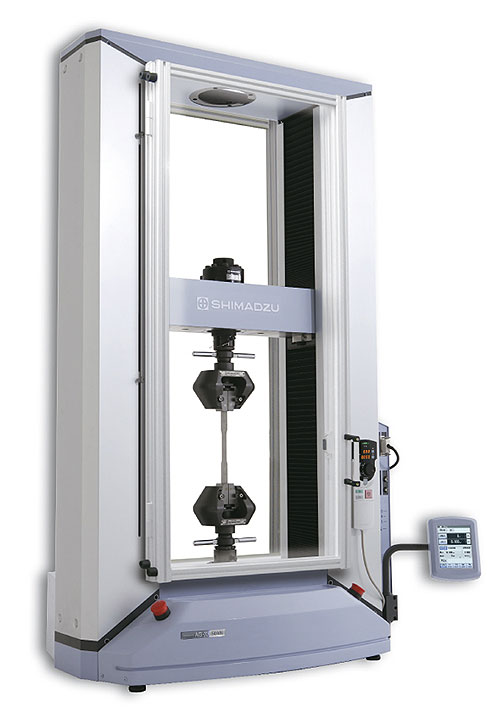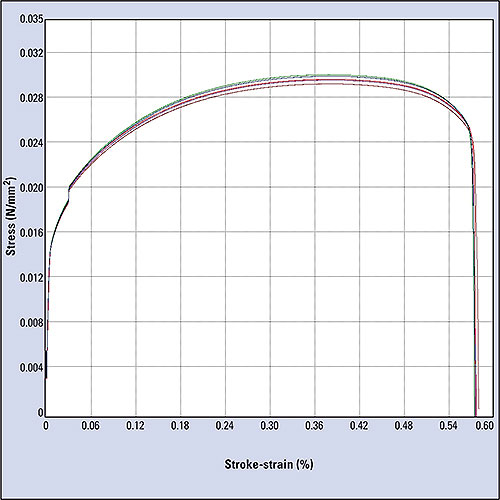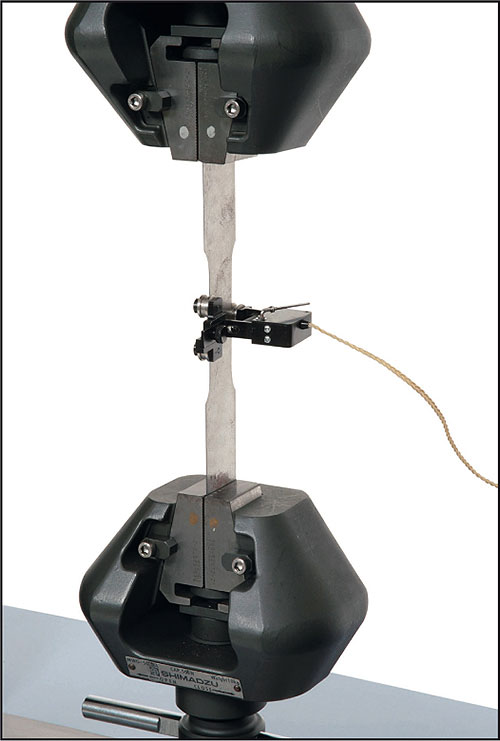Ahead of its time
Shimadzu Universal Testing Machines already fitting the new ISO 6892 regulation
 Figure 1: AG-X 50kN extensometer SSG 50-10H, Trapezium-X software
Figure 1: AG-X 50kN extensometer SSG 50-10H, Trapezium-X software
Revision of the ISO 6892 Standard for tensile testing of metals requires, first and foremost, accurate sensors and flexible software.
 Figure 2: Strain-controlled stress-strain diagram of steel samples. The curve progression in the stress-strain diagram is shown, after changing the strain rates. For clarity, the curves were shifted slightly.
Figure 2: Strain-controlled stress-strain diagram of steel samples. The curve progression in the stress-strain diagram is shown, after changing the strain rates. For clarity, the curves were shifted slightly.
Tensile testing for both determination of maximum breaking strength and elastic properties are essential requirements for the assessment of the characteristics of a material. This applies equally to metallic as well as plastic or ceramic materials. As metals are commonly used in the construction of complex structures such as bridges, high-rise buildings, automobiles and ships, but also in more common products such as support cables or high-voltage power lines, strictly defined standards of measurement are required. These standardized methods are essentially represented by ISO 6892 and EN 10002.
In the past it could be shown that, depending on the testing system used, the assumed level of comparability was not valid, as the standard merely required power-controlled regulation. Differing slow or precise testing machines deliver different results, especially when measuring yield strength Rϵ as well as yield point Rρ. These irregularities required a revision of the standard.
The new ISO 6892-1 standard has been published in December 2009. It replaces the previous EN 10002 norm and now requires stress-controlled or strain-controlled tensile tests. For many instruments, this requires very costly modifications or retrofitting. This is not, however, the case for Shimadzu’s electromechanical and hydraulic tensile testing machines in the AG and UH series.
 Figure 3: Typical configuration: Tensile test of testspecimen with manually non-shift wedge type grips and contact extensometer
Figure 3: Typical configuration: Tensile test of testspecimen with manually non-shift wedge type grips and contact extensometer
Here, the interplay between state-of-the-art force sensors and displacement sensors, as well as the use of an ultrafast controller as common interface, ensures that future standards can be easily implemented.
This is also supported by the flexible Trapezium-X software, which has already integrated such revisions in standards relating to measuring methods. New measuring methods such as those required by the new ISO 6892-1 standard can be implemented easily with just a few mouse clicks, resulting in highly precise stressstrain diagrams.
Highly newsworthy
The ISO 6892-2 standard for tensile testing of metals at elevated temperatures is also currently in revision. Shimadzu’s systems already cover this standard …